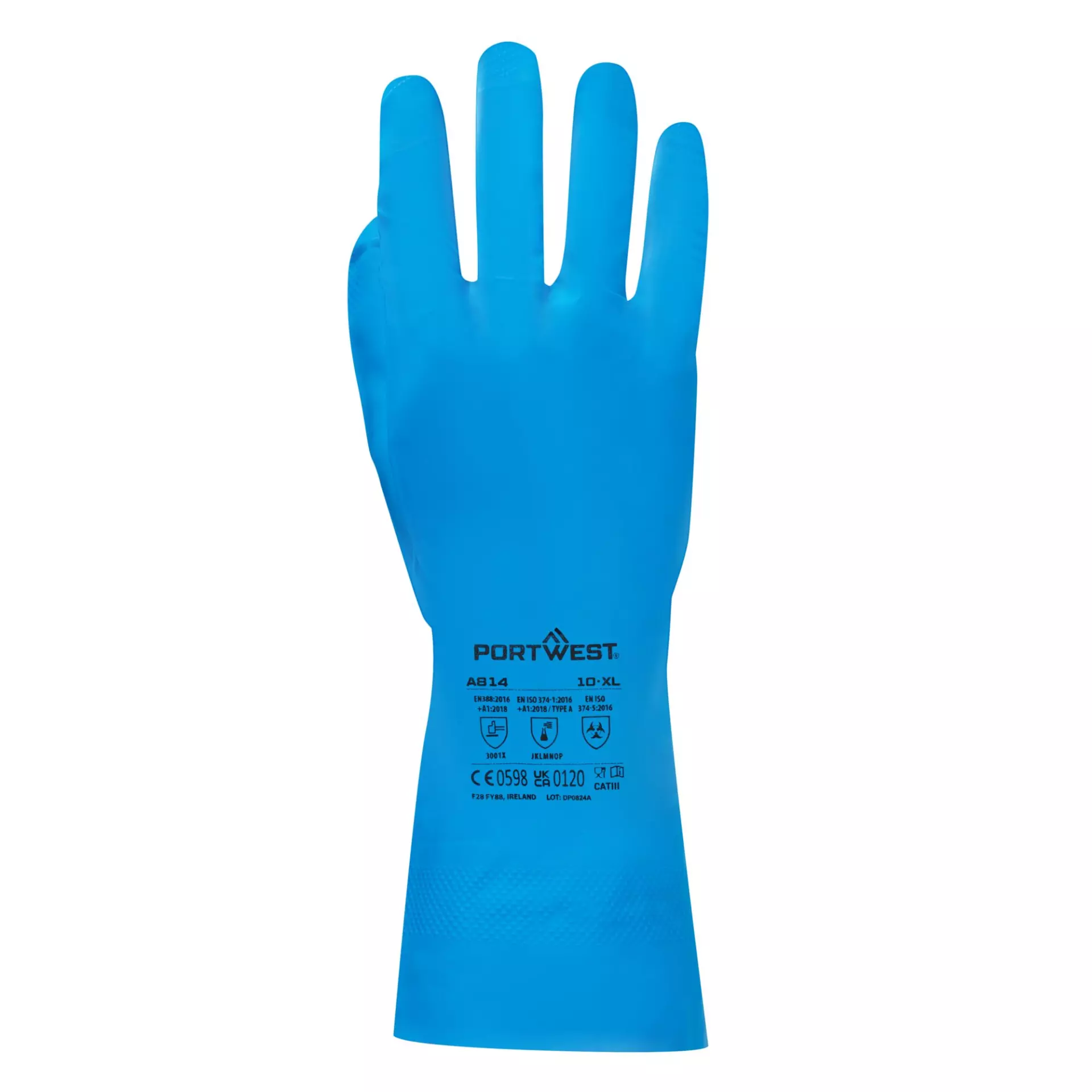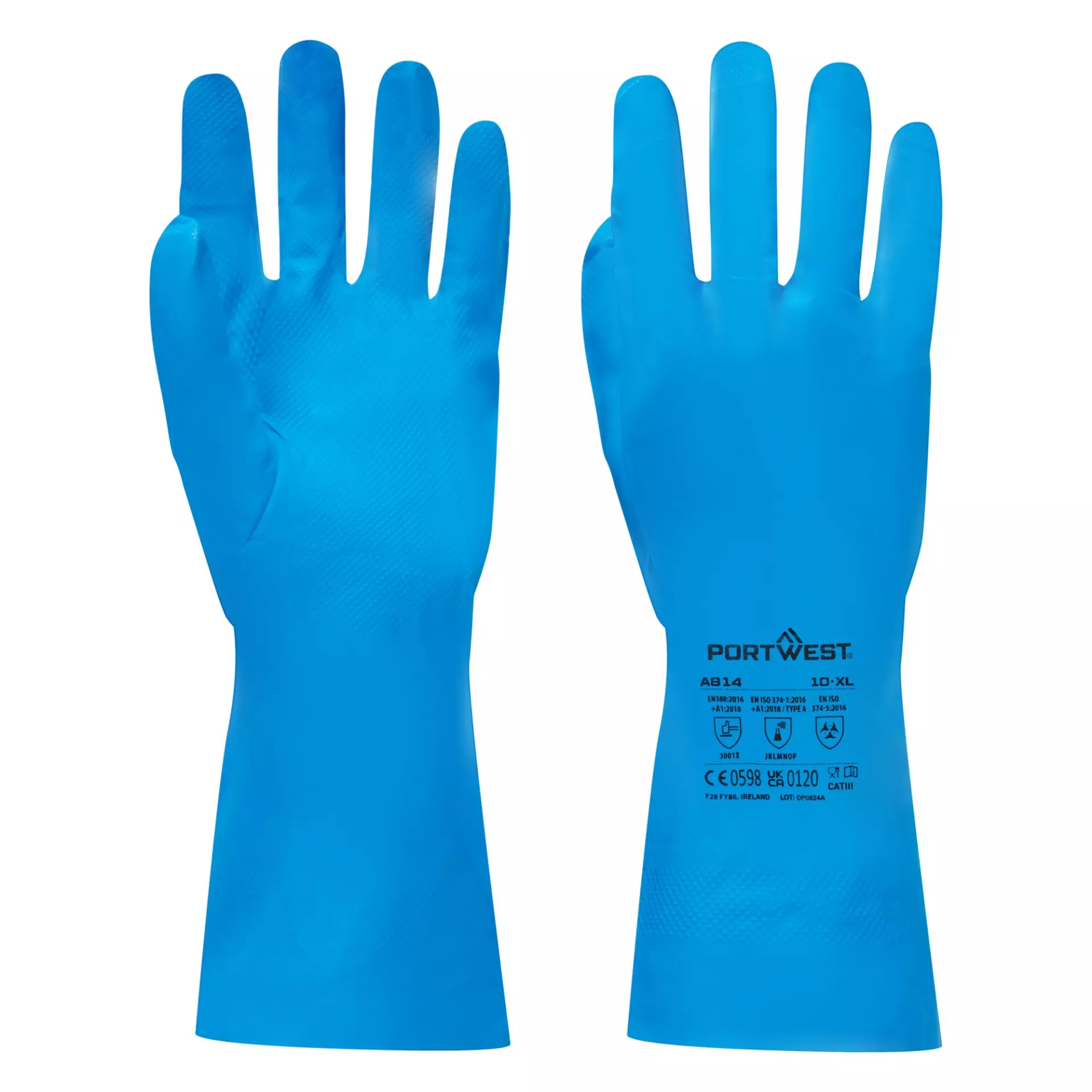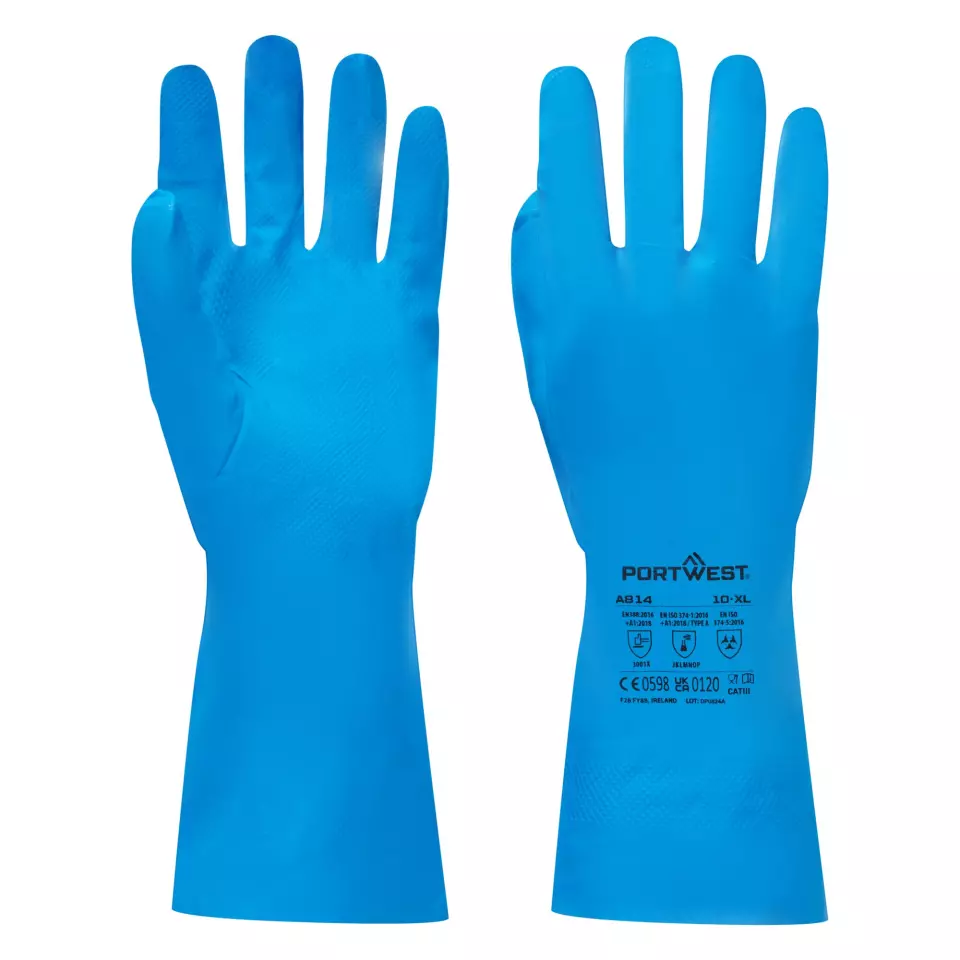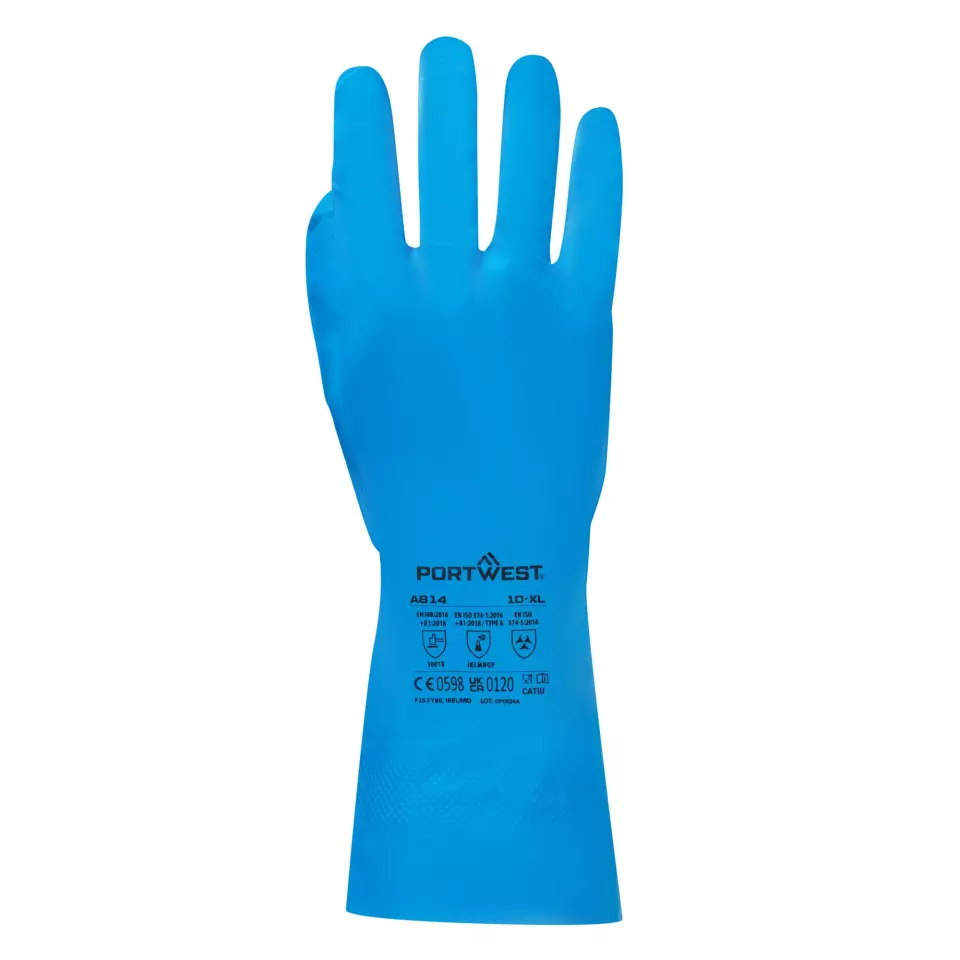

Features You'll Love

Coating Material · Nitrile
Grip Finish · Textured
The material applied to glove surfaces to enhance grip, protection, and durability for specific work conditions and hazards.
The surface texture or coating on the palm and fingers that determines how securely the gloves can grip tools, materials, and surfaces during work tasks.

EN 388 · Tear Resistance Level 0, Puncture Resistance Level 1
Offers no rated protection against the material tearing apart.
Provides basic protection against punctures from blunt objects like splinters, not sharp points like needles.
Portwest
Food Approved Nitrile Gauntlet, Blue, 12 pairs
Food Approved Nitrile Gauntlet, Blue, 12 pairs
5 / 5
37,24 €
Price per 12 pairs
3,10 € / pair
Choose size
Shipping fee is 7,95 € for orders under 80,00 €
Features You'll Love

Coating Material · Nitrile
Grip Finish · Textured
The material applied to glove surfaces to enhance grip, protection, and durability for specific work conditions and hazards.
The surface texture or coating on the palm and fingers that determines how securely the gloves can grip tools, materials, and surfaces during work tasks.

EN 388 · Tear Resistance Level 0, Puncture Resistance Level 1
Offers no rated protection against the material tearing apart.
Provides basic protection against punctures from blunt objects like splinters, not sharp points like needles.
Product description
The Chem 330 Nitrile Food Gauntlet is a chemical-resistant protective glove designed specifically for the food industry. Offering outstanding flexibility and dexterity with excellent tear and puncture resistance, this 100% latex-free and silicone-free gauntlet provides reliable protection for food handling applications. The textured surface enhances grip performance while maintaining the precise dexterity required for detailed work across food, chemical, and manufacturing environments.
Product Features:
- 100% latex free construction
- Silicone free formulation
- Textured pattern for enhanced grip
- Outstanding flexibility and dexterity
- Excellent tear and puncture resistance
Technical Details:
- 0.28mm thickness
- 330mm length
- Chemical resistant gauntlet
- CE certified
- CE foodsafe
Recommended Applications:
- Food industry and food handling
- Chemical and oil industries
- Manufacturing and paint applications
- Electronics and glass handling where silicone is problematic
Standards:
- EN ISO 21420: 2020 Dexterity 5
- EN 388: 2016 + A1: 2018 (3001X)
- EN ISO 374-1:2016 + A1:2018 Type A (JKLMNOP)
- EN ISO 374-5:2016 Micro Organisms